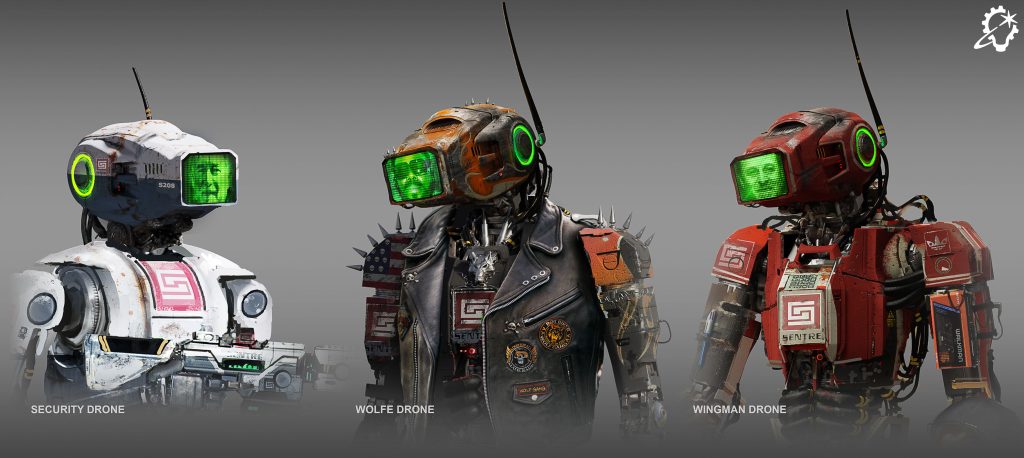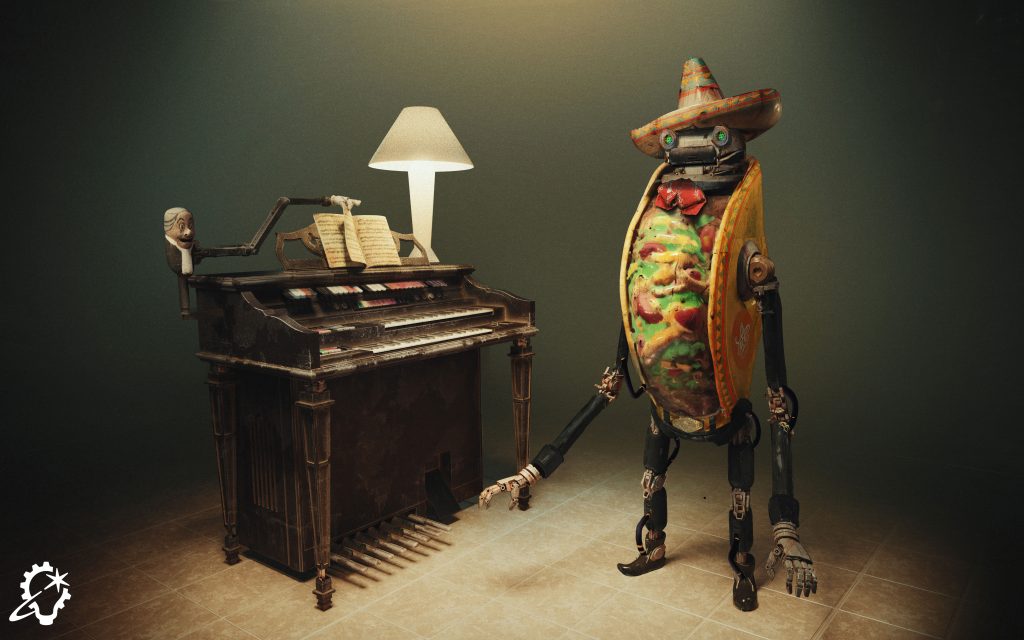ILM.com is showcasing artwork specially chosen by members of the ILM Art Department. In this installment of a continuing series, three artists from the San Francisco and Vancouver studios share insights about their work on the 2025 Netflix production, The Electric State.
Supervising Art Director Fred Palacio

The primary goal for this piece was to expand the universe of the book by introducing a new character type of “humanoid drones.” A secondary objective was to give the drone a distinct identity — customizable much like how we personalize our phones.
We started with some existing designs but needed to push further to keep the spirit of author Simon Stalenhag. Take Wolfe, for example: it features numerous subtle details and paint choices that lean into a biker aesthetic, ranging from purely decorative elements to practical tools. Its unique color scheme further pushes this visual language. In contrast, the Security drone is designed to feel more industrial and less customizable. One of the most challenging aspects was the head design, which needed to resonate with the book’s visual style.
Designs should always speak to the client and audience alike, while staying true to a consistent visual language. The design must strike a balance between distinctiveness — so the character can be recognizable in any light situation — and coherence with the established universe. Struggle is the challenge, which we love. Our job is to embrace it and transform into an achievement, where a piece concept becomes a living character on screen.
Senior Art Director Alex Jaeger

These were the outcast Scav bots. They were also an attempt to add back the more creepy and somber tone that Simon Stalenhag’s artwork contained. The goal for these was to design a series of bots that were “collectors.” They each had a theme and that theme is what drove the design and personality of each one.
The process for creating these was to first block out some overall shapes for the proportions, so that they would read in the shadows since these would mostly be seen at night. Second was to block them out in 3D and begin the themes of each, adding more complexity with each pass. Then came the balance of tone. I created cleaner, brighter versions, then dirty and desaturated versions, then darker, moody versions. The end product was a mix with the colors only coming through brighter around the heads to draw the eye, and the rest faded off. There were also several passes for the amount of cables and adjustment of scale. This final version was the midway level of cables and adjusted scale.
When it came time to do the dirty textures I found some great inspiration from abandoned theme parks. To see how some painted graphics faded while others almost got better with age and gathered great patinas even over brighter colors.
Senior Concept Artist Kouji Tajima

They are two robots from the mall, named Tacobot and Pianobot. They were probably robots that worked in the mall’s restaurants or music stores. The biggest challenge was figuring out how to get the style as close as possible to Simon Stalenhag’s. To do that, I studied the kinds of parts and cables he uses in his paintings.
When I was designing Tacobot, I studied the textures of a lot of advertising figures and signs from real taco and hamburger shops. Because of that, I gave the taco ingredients on its body — like the vegetables — a painted look instead of a realistic texture.
Normally, I don’t do any sketches. I go straight into 3D software and develop a few different ideas. In addition to this version, there was also one with a face and a mustache in the middle of the taco!
—
See the complete gallery of concept art from The Electric State here on ILM.com.